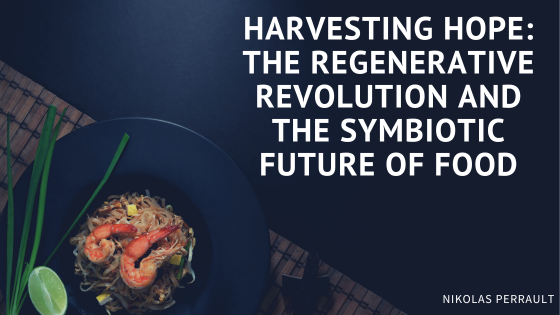A significant shift has occurred in consumer preferences, steering the food industry towards more sustainable and ethical practices. This shift transforms how people think about the food they consume and influences the agricultural methods employed to meet this growing demand. At the forefront of this movement is the rise of regenerative agriculture – a holistic approach that aims to restore and rejuvenate the environment while producing nourishing, high-quality food. Let’s delve into the critical components of this transformative phenomenon.
Market for Sustainable and Ethical Food
Consumers today are more conscious than ever about the impact of their choices on the planet. A growing awareness of climate change, deforestation, and the depletion of natural resources has led to a demand for food that is not only nutritious but also sustainably produced. This shift in consumer values is reflected in their purchasing decisions, with an increasing number of people opting for products that align with their ethical and environmental concerns.
The History of Regenerative Agriculture
While regenerative agriculture may seem like a contemporary movement, its roots can be traced back to indigenous and traditional farming practices prioritizing the symbiotic relationship between humans and nature. Over time, conventional agricultural methods dominated the scene, but the adverse environmental effects have led to a resurgence of interest in regenerative practices. Farmers, scientists, and consumers alike recognize the importance of returning to a more harmonious and sustainable way of producing food.
A Deeper Look Into Regenerative Agriculture
Regenerative agriculture is not merely a set of farming practices; it is a philosophy that aims to enhance the health and vitality of the entire ecosystem. Unlike conventional agriculture, which often depletes the soil and relies heavily on chemical inputs, regenerative agriculture focuses on building soil health, promoting biodiversity, and improving water management. Cover cropping, rotational grazing, and minimal tillage are integral to this approach, working harmoniously to create a regenerative cycle that benefits the land and the community.
The Statistics
The statistics speak volumes about the rise of regenerative agriculture. According to a survey by a leading market research firm, over 70% of consumers are willing to pay a premium for environmentally friendly products produced using sustainable practices. This surge in demand has catalyzed a regenerative revolution, prompting farmers and food producers to adopt regenerative practices to meet market expectations.
Environmental Affects
At the heart of regenerative agriculture lies a profound connection to the environment. By fostering healthy soil, regenerative practices sequester carbon, mitigate climate change, and enhance the resilience of ecosystems. This approach also reduces the need for synthetic fertilizers and pesticides, minimizing pollution and protecting water quality. The environmental benefits of regenerative agriculture extend beyond the farm, positively impacting the global ecosystem and contributing to the overall well-being of the planet.
The rise of regenerative agriculture is a testament to the changing landscape of the food system. Driven by consumer demand for sustainable and ethical options, this movement has the potential to reshape the entire agricultural industry. As we continue to witness the regenerative revolution gaining momentum, it becomes evident that the future of food lies in practices that nourish our bodies and nurture the planet we call home.
